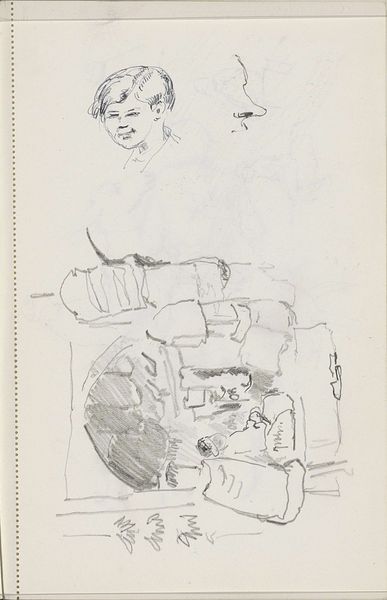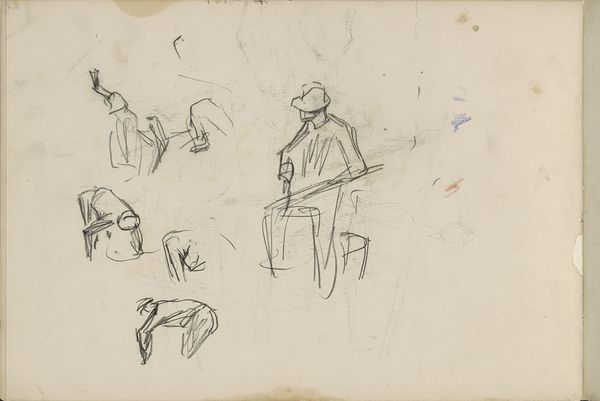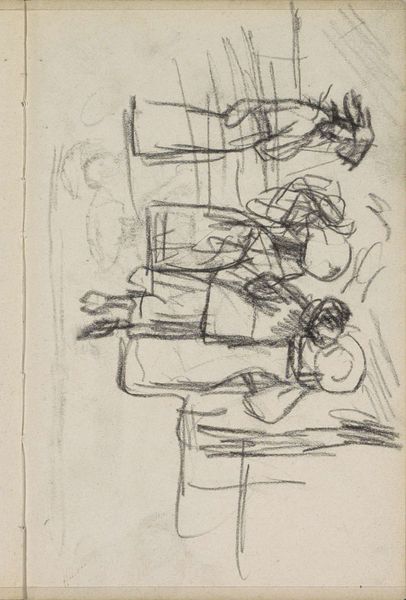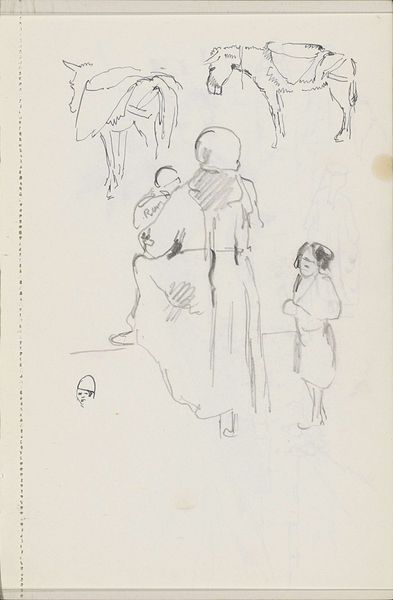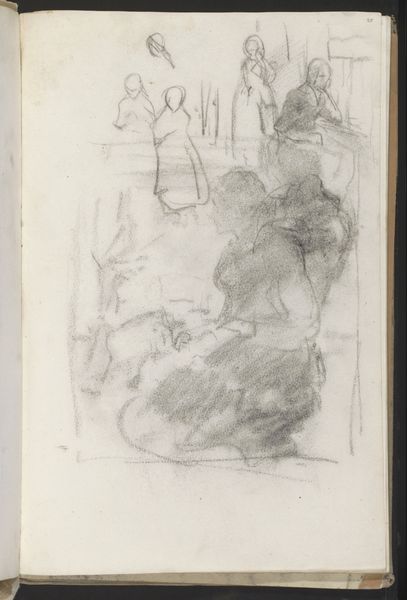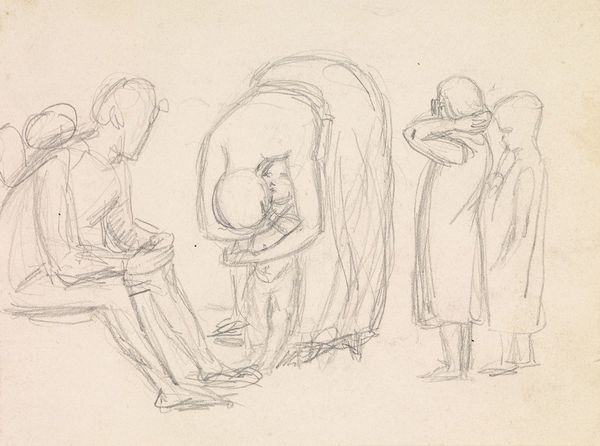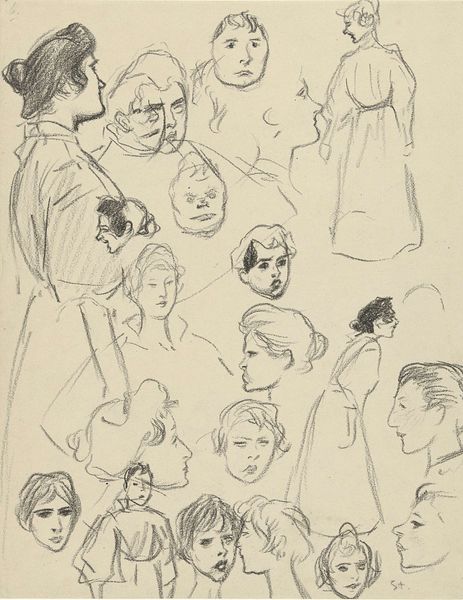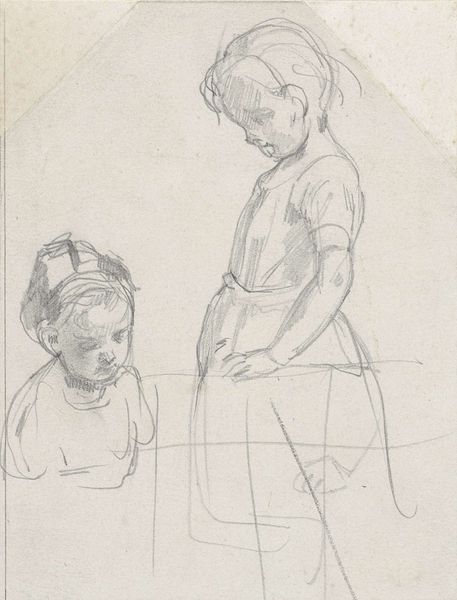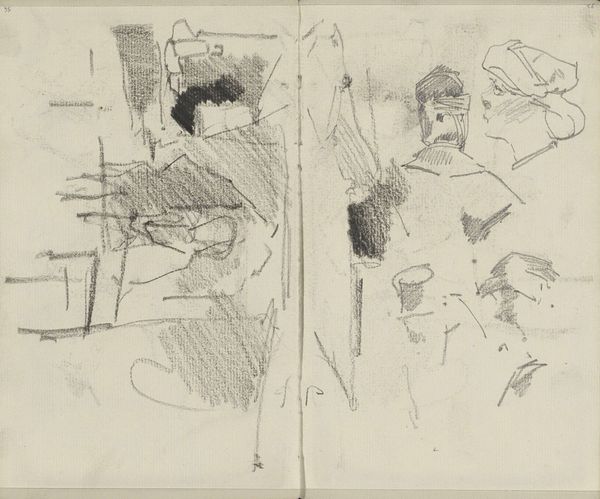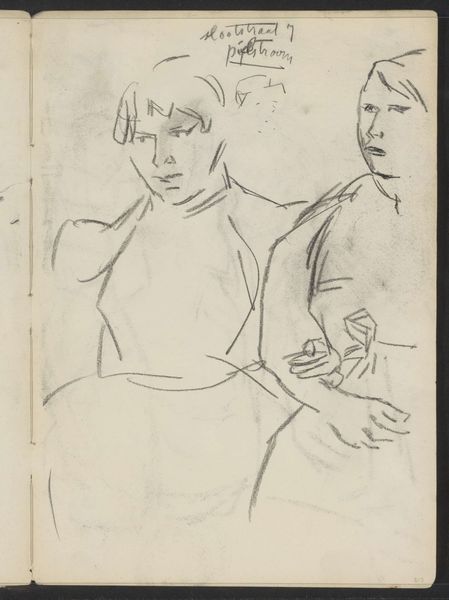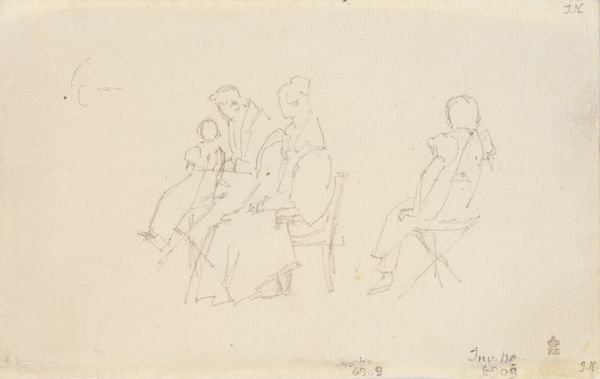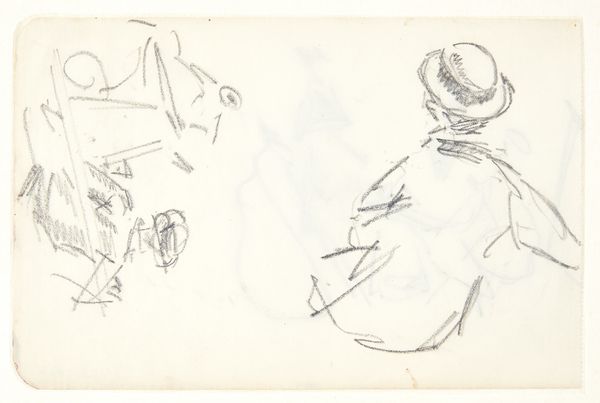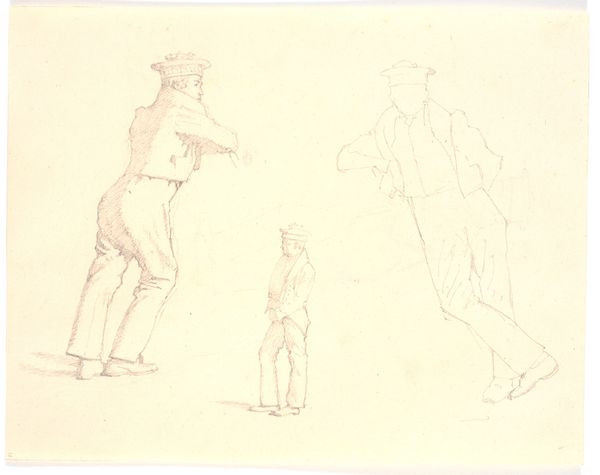
drawing, pencil
#
portrait
#
drawing
#
imaginative character sketch
#
figuration
#
personal sketchbook
#
idea generation sketch
#
sketchwork
#
character sketch
#
dynamic sketch
#
detailed observational sketch
#
pencil
#
sketchbook drawing
#
storyboard and sketchbook work
#
academic-art
#
realism
#
initial sketch
Dimensions: height 200 mm, width 248 mm
Copyright: Rijks Museum: Open Domain
Editor: This is "Study of Three Children" by August Allebé, likely created sometime between 1848 and 1927. It’s a pencil drawing, a quick sketch, really, that feels quite intimate, capturing a sense of fleeting childhood. What stands out to you? Curator: The intimacy, as you call it, strikes me as a carefully constructed image. It speaks to how childhood was perceived and presented in that era, what visual tropes were employed. These children aren’t simply being observed; they are being cast. Editor: Cast how? Like actors? Curator: Exactly. Consider the pose of the child on the right. The arm draped, the direct gaze—it echoes classical portraiture, immediately elevating the subject. Allebé is drawing upon centuries of visual language that equates posture with status. But then the medium—the quick sketch—adds a layer of “realism,” of capturing the everyday. Editor: So there’s a tension between the classical ideal and a modern sense of observation? Curator: Precisely. The child in the center, seen from the back, is more enigmatic. The blankness invites projection. It allows the viewer to enter the scene, almost as another child in their play. Are those defined social roles imposed by clothing? Are they escaping those roles by how they arrange themselves in play? Editor: That’s interesting, I didn’t think of it that way. I was more focused on the simplicity of the line, the candid feeling. Curator: And that's a valid interpretation, it draws you in, but also prompts, what does childhood represent symbolically? And how do we choose to remember it through images? What does Allebé want *us* to remember? Editor: I see, this sketch holds more layers of meaning than I first realised! Thanks!
Comments
No comments
Be the first to comment and join the conversation on the ultimate creative platform.
